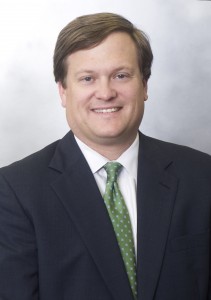 Christian & Small Partner, Michael Vercher, recently wrote an article, “Expert Witnesses Are Focus of Revisions to FRCP Rule 26” that was published in the American Bar Association (ABA) Tort Source newsletter.
Christian & Small Partner, Michael Vercher, recently wrote an article, “Expert Witnesses Are Focus of Revisions to FRCP Rule 26” that was published in the American Bar Association (ABA) Tort Source newsletter.
Here is the piece in its entirety. It is very relevant to anyone who has already been impacted by the recent changes to the Federal Rule of Civil Procedure 26.
Expert Witnesses Are Focus of Revisions to FRCP Rule 26
Michael Vercher
If you litigate products liability, professional malpractice, property, or other expert-intensive cases, chances are your practice has already been impacted by the recent changes to Federal Rule of Civil Procedure 26. This article provides is a summary of those changes as they relate to expert witnesses.
In an effort to address what the Advisory Committee on Civil Rules characterized as the undesirable effect of the 1993 amendment that led to rising costs associated with expert witnesses, Rule 26 was amended in three major ways, effective December 1, 2010. Rule 26(a)(2)(B)(ii) was amended to provide that disclosures of testifying experts include all “facts or data considered by the witness in forming” the opinions rather than the previous more general “data or other information” disclosure required by the 1993 amendment. Rule 26(b)(4) was amended to extend work product protection to an expert’s draft reports and attorney-expert communications. Rule 26(a)(2)(C) was amended to require a more limited disclosure of witnesses qualified to provide expert opinions in a case but who are not retained for the purpose of providing expert testimony, such as treating physicians, in-house employees with expertise, and commercial mechanics.
Rationale for Amendments
To understand the impact of these changes, a brief examination of the rationale for the amendments is helpful. The comments accompanying the amended rule note that the revisions address the fact that many courts interpreted the 1993 amendment to Rule 26(b)(4)(A) to authorize discovery of all communications and exchanges of draft expert reports between counsel and expert witnesses. The extension of work product protection to communications and draft reports was designed, therefore, to ensure that lawyers interact with retained experts without fear of exposing those communications to searching discovery by opposing counsel. The comments also make clear that “the refocus of disclosure on ‘facts or data’ is meant to limit disclosure to material of a factual nature by excluding theories or mental impressions of counsel.” The revisions to Rule 26 directly address the wasteful litigation practices that were necessitated by the 1993 amendments and that resulted, for example, in parties hiring two sets of experts—one for consultation and one for trial testimony—to prevent the disclosure of the attorney’s case analysis.
The changes to Rule 26(a)(2)(C) provide clarity to a previously gray area by specifically addressing what kind of report is required for witnesses who can provide both fact and expert testimony. Provided an expert was not retained or specifically employed to provide expert testimony in the case, and is not one whose duties as the party’s employee regularly involve giving expert testimony, a disclosure regarding this type of witness need only state the subject matter on which the witness is expected to present evidence and a summary of the facts considered in formulating an opinion.
Limited Application, Exemptions from Protection
The extension of work product protection to testifying expert materials is not unlimited. It applies only to experts retained or specifically employed to provide expert testimony and does not apply to experts who also are fact witnesses disclosed pursuant to Rule 26(a)(2)(C). Further, specifically exempted from the protection are communications in any form that (1) relate to compensation for the expert’s study or testimony, (2) identify facts or data that the party’s attorney provided and that the expert considered in forming the opinions to be expressed, or (3) identify assumptions that the party’s attorney provided and that the expert relied on in forming the opinions to be expressed.
The changes to Rule 26 are not intended to hamper opposing counsel from obtaining information regarding the development, foundation, or basis of testifying experts’ opinions. That means attorneys are still free to inquire about alternative analysis and testing methods, as well as whether or not the expert considered them in forming his or her opinions. While this remains a fertile ground for effective cross examination, the rule changes appear to completely foreclose the time-tested technique of confronting an expert with his or her evolving drafts of a report to show how an attorney can influence an expert’s final product.
Michael A. Vercher is a partner with Christian & Small LLP in Birmingham, Alabama, where he handles litigation statewide, ranging from general insurance defense matters to the defense of complex trucking, construction, property, and mass tort cases. He can be reached at mavercher@csattorneys.com.
